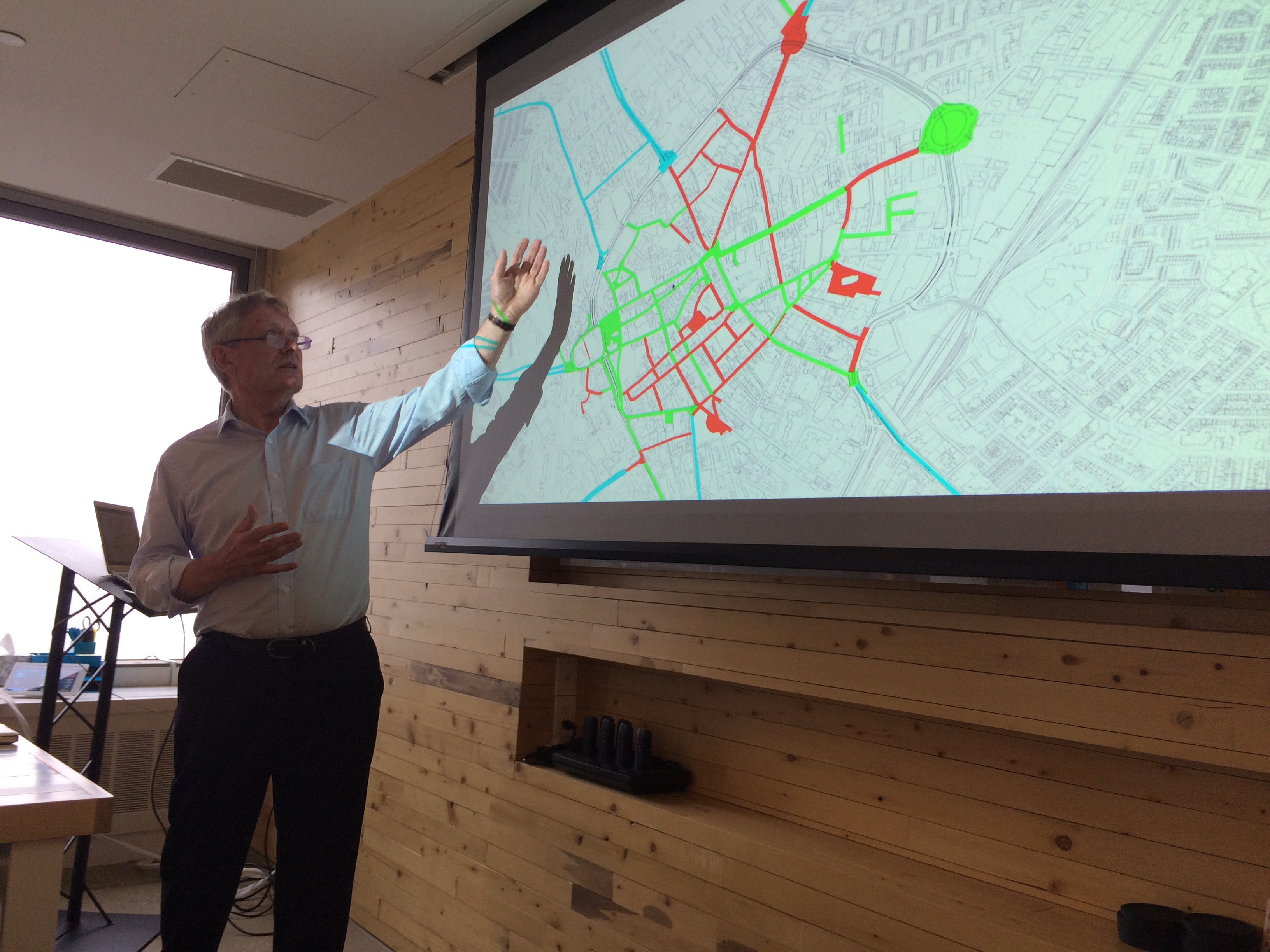
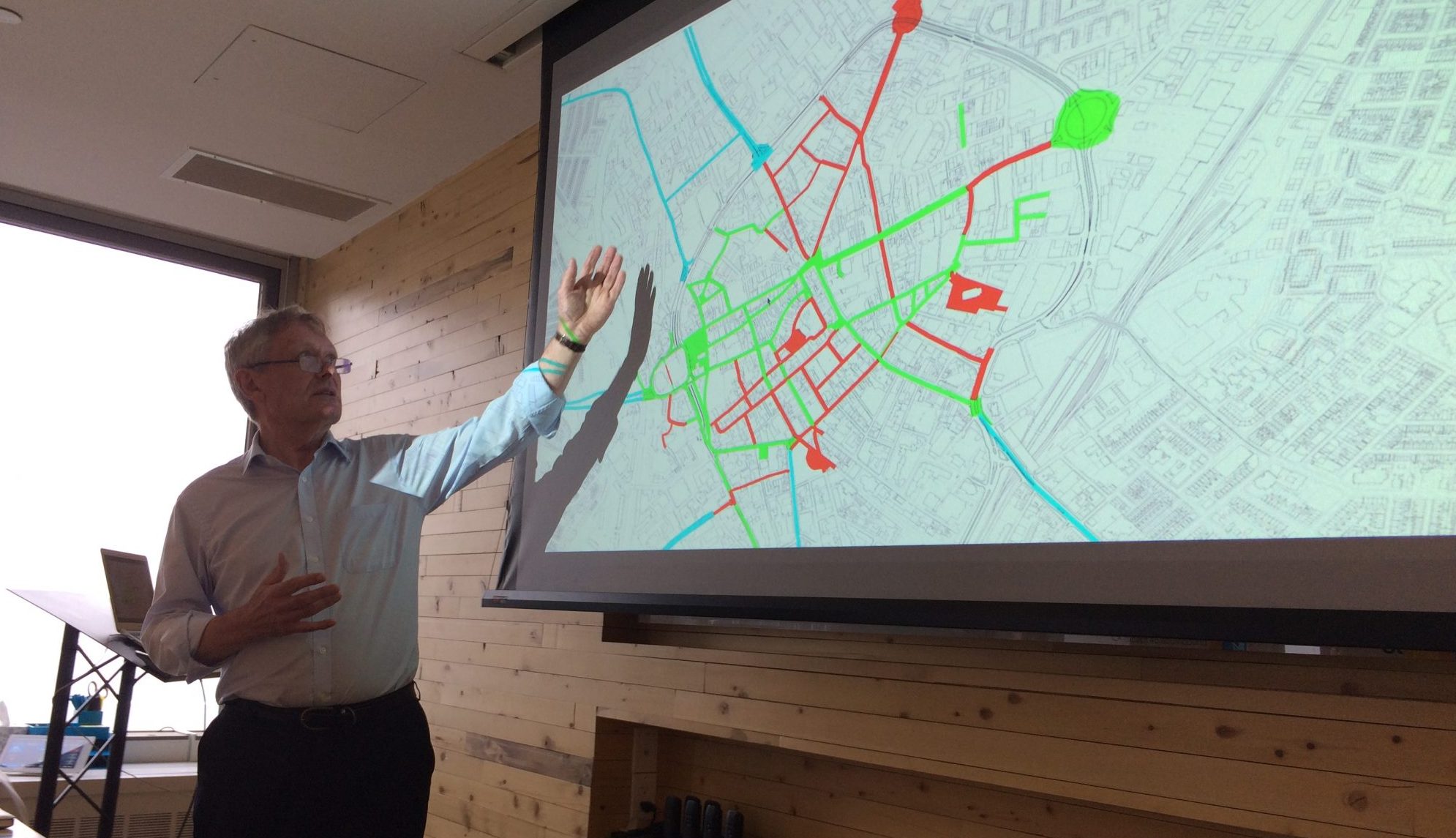
When Leicester elected its first Mayor in 2011, Sir Peter Soulsby, it bid goodbye to car-centrism in the public realm. While Greater Leicester is England’s 11th largest urban area, the mayor’s bold leadership has brought it to the top of the stack for street design, active transportation, and public transit. In his first mayoral term, Soulsby and his administration expanded an extensive network of pedestrian and bicycle-only roads, while removing automobile traffic, in the center city. Elected decisively to a second term last year, he visited TransitCenter recently to share the vision and strategy behind past successes, and discuss the role of bus transit in moving Leicester forward today.
Leicester is a small city of 350,000 with a distinctively cosmopolitan center. Over the past century, however, Leicester was reconfigured to accommodate car mobility. After the vibrant walkable and bikeable medieval downtown was paved over, people exited the center in favor of suburban living and a car-centric lifestyle. The myopia of this planning is perhaps best encapsulated in the 2012 excavation of King Richard iii’s remains from below a parking lot in downtown Leicester. Luckily, with Soulsby’s leadership, a new vision for the city ended this winter of discontent.
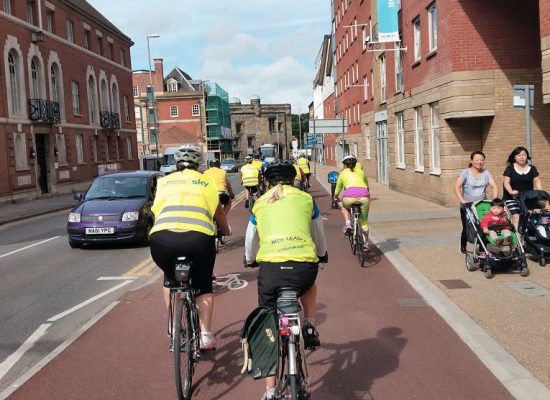 The pedestrianization of Leicester’s downtown core began in the 1970s, and Soulsby
The pedestrianization of Leicester’s downtown core began in the 1970s, and Soulsby
formalized this momentum into a policy rubric at the beginning of his administration, immediately building out more shared space for pedestrians and bicycles. The initiative’s popularity made it easier to advance similar projects throughout the city and pursue other sorts of streets changes, including traffic calming and bus prioritization measures. Over Soulsby’s first term the city has debuted an extensive network of protected bike lanes across the downtown and into the surrounding neighborhoods. Currently, about 13,000 people per day use bikes as their primary mode of transportation. Mayor Soulsby and the city council plan to quadruple that number to achieve 10 percent bicycle mode share by 2024 as a part of their Connecting Leicester plan.
Connecting Leicester prioritizes streets designed for people, top-notch transit, and increasing the transit-accessible housing supply to accommodate rapid population and economic success. Transit is a key element of this strategy. Building on the city’s 2013 Quality Bus Corridor Scheme – which introduced new and improved bus lanes, junction improvements, new bus stop facilities and real time inform
ation signs on one of the key routes into Leicester – Connecting Leicester expands that program to other routes across the city. One of the other flagship transit projects of Connecting Leicester is the new Haymarket Bus Terminal in the center of the city, which was renovated for 13.5 million pounds and reopened this past May. The terminal, with a focus on improving the environment for bus passengers and facilitating more efficient and reliable bus services, further signals the importance of the transit network in facilitating Leicester’s success.
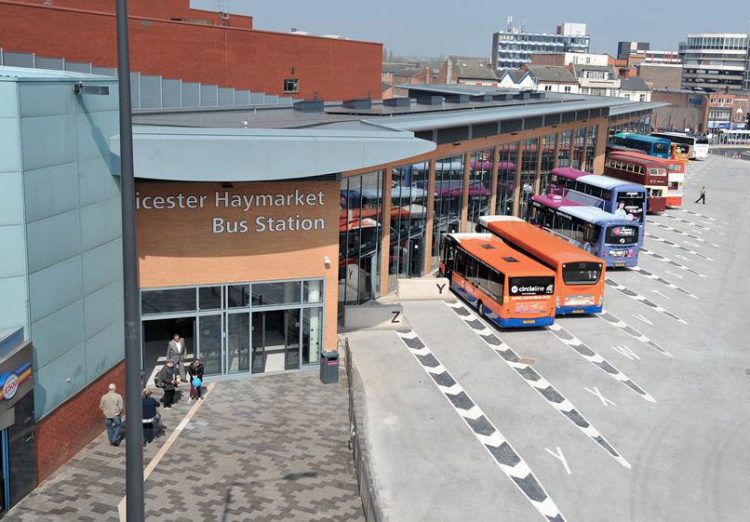 Haymarket Bus Station, renovated in 2016 with a focus on facilitating more efficient & reliable bus service.
Haymarket Bus Station, renovated in 2016 with a focus on facilitating more efficient & reliable bus service.
The pushback that Soulsby encountered to these changes has familiar echoes across the United States. In 2014, almost 1200 people signed a petition against Soulsby attributing downtown congestion to new bike and bus lanes, and some merchants have expressed fear about the impacts of traffic changes on customer access to their businesses. Soulsby, while receptive to dissent, remained steadfast that walking, biking, and transit must be prioritized in public space. With Connecting Leicester as a prominent component of his platform, Soulsby was enthusiastically re-elected in 2015 and in July of 2016, the plan won a design award from the Transport Planning Society for “outstanding practice in urban planning and public realm improvements.”
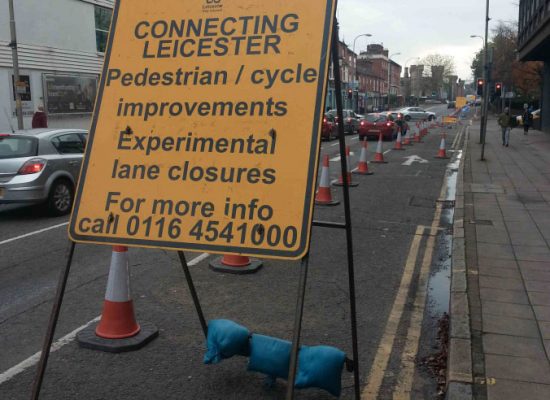
Leicester is a brick and mortar example of mobility investments that have transformed urban life, as well as a case study in courageous leadership from which advocates and leaders everywhere have something to learn. Mayor Soulsby has championed rapid and tangible changes in the downtown, allowing residents to experience the value of these changes for themselves. This orientation towards small scale “demonstration projects” – projects that show the range of possibilities for public space and allow people to see and feel those alternatives first hand – is a powerful tool. Every city has its own King Richard iii buried under a parking lot and a culture to discover where cars once reigned.
 On the Brink: Will WMATA’s Progress Be Erased by 2024?
On the Brink: Will WMATA’s Progress Be Erased by 2024?
The experience of being a WMATA rider has substantially improved over the last 18 months, thanks to changes the agency has made like adding off-peak service and simplifying fares. Things are about to get even better with the launch of all-door boarding later this fall, overnight bus service on some lines starting in December, and an ambitious plan to redesign the Metrobus network. But all of this could go away by July 1, 2024.
Read More A Bus Agenda for New York City Mayor Eric Adams
A Bus Agenda for New York City Mayor Eric Adams
To create the “state-of-the-art bus transit system” of his campaign platform, Mayor Adams will have to both expand the quantity and improve the quality of bus lanes. We recommend these strategies to get it done.
Read More